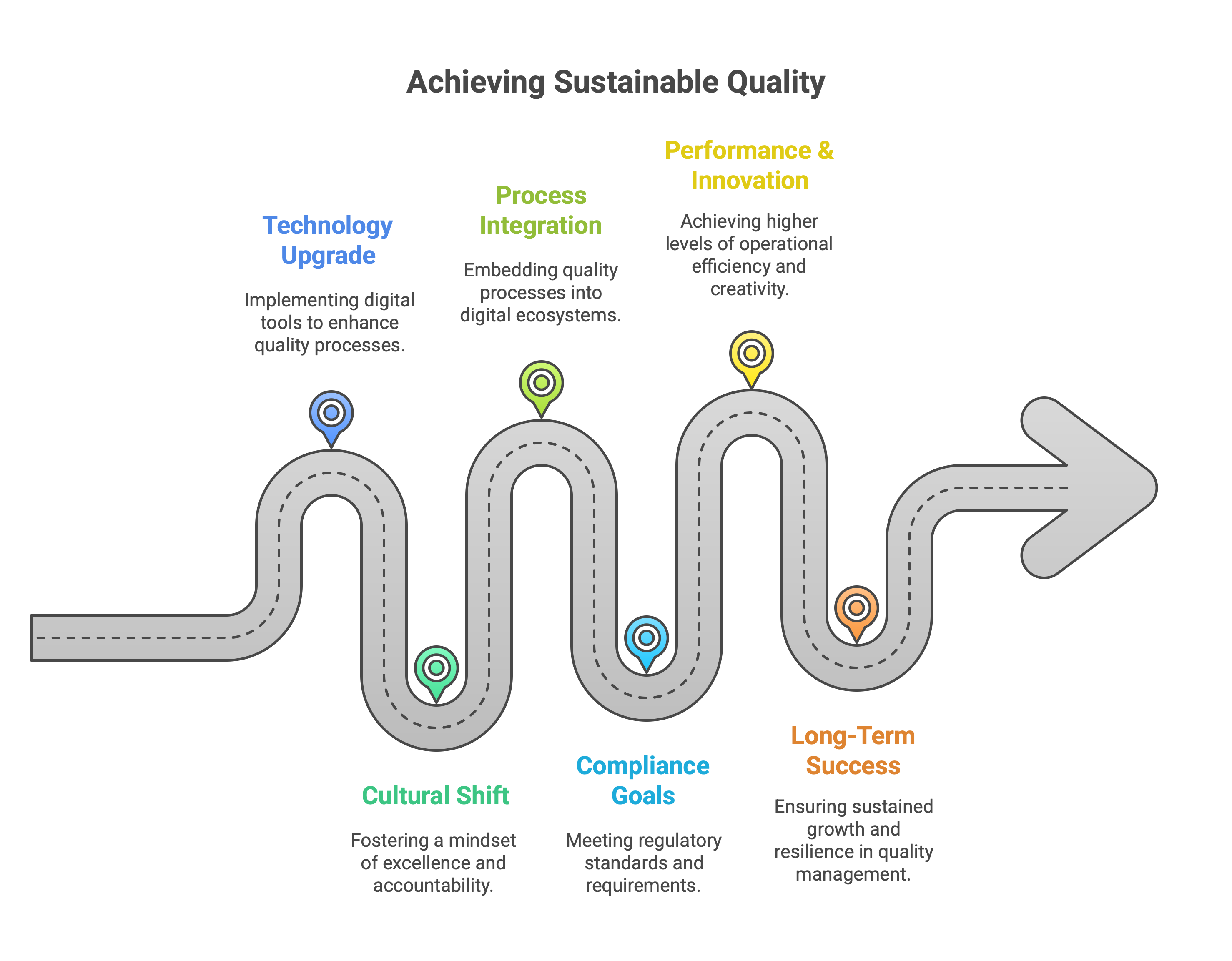Quality Management is more than compliance — it’s about building trust, ensuring consistency, and driving continuous improvement. Over the years, I’ve seen how traditional, paper-based or fragmented digital QMS approaches can become obstacles to achieving operational excellence.
Digitization is no longer a luxury; it’s an enabler of strategic quality leadership.

1. Streamlining Quality Processes Through Automation
Manual quality systems are prone to delays, miscommunication, and errors. With a digitized QMS, we automate key workflows — from audit scheduling to document control — freeing our teams to focus on driving actual improvements rather than chasing paperwork.
2. Enabling Real-Time Visibility and Proactive Action
In quality management, timely insights make all the difference. A digital QMS offers real-time visibility into non-conformances, CAPAs, and audit findings. This empowers quality teams to act fast, prevent recurrence, and maintain a proactive stance across the organization.
3. Ensuring Consistent and Scalable Compliance
Whether managing ISO, FDA, or industry-specific standards, consistency is key. Digital QMS platforms standardize compliance frameworks across sites and teams, making internal audits more efficient and ensuring sustainable alignment with regulatory expectations.
4. Making Quality Data Actionable
Quality professionals thrive on data, but value comes from interpretation and action. Digital QMS systems offer centralized dashboards, trend reports, and KPIs that allow for targeted interventions and strategic quality planning based on evidence rather than assumptions.
5. Enhancing Agility in a Dynamic Environment
Regulatory updates, customer expectations, and supplier variations demand agility. A digital QMS is built to evolve — with modular capabilities and cloud-based scalability that future-proof quality systems and ensure business continuity.
6. Strengthening Accountability and Engagement
Quality is a shared responsibility. With intuitive interfaces, mobile access, and role-based task management, a digital QMS fosters engagement at all levels. Employees understand their role, track their contributions, and become active participants in quality assurance.

Conclusion: Elevating Quality Through Digitization
As a quality professional, I believe that digitizing the QMS is a transformative step — one that empowers us to lead with clarity, act with precision, and align quality objectives with broader business goals. It’s not just about technology; it’s about unlocking the full potential of quality as a driver of performance, resilience, and competitive advantage.









 BR 24711
BR 24711  US 7693
US 7693  MY 6073
MY 6073  VN 5446
VN 5446  AR 2215
AR 2215  MX 1789
MX 1789  GB 1787
GB 1787  CN 1601
CN 1601 




